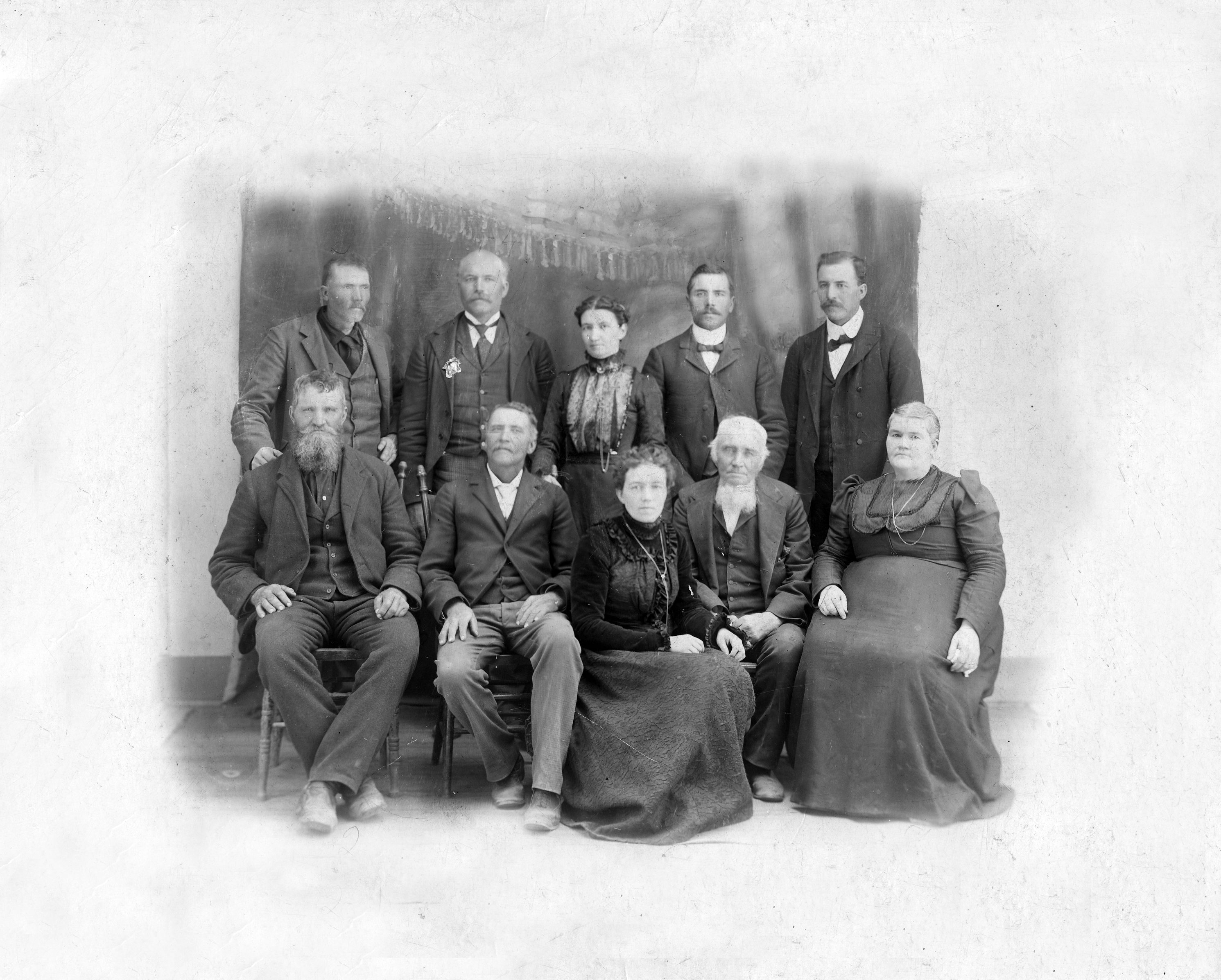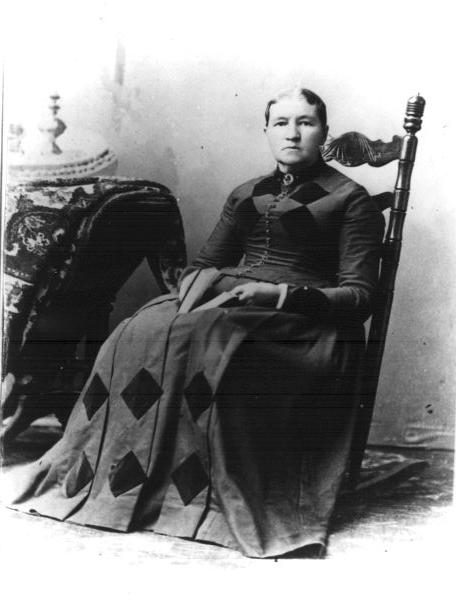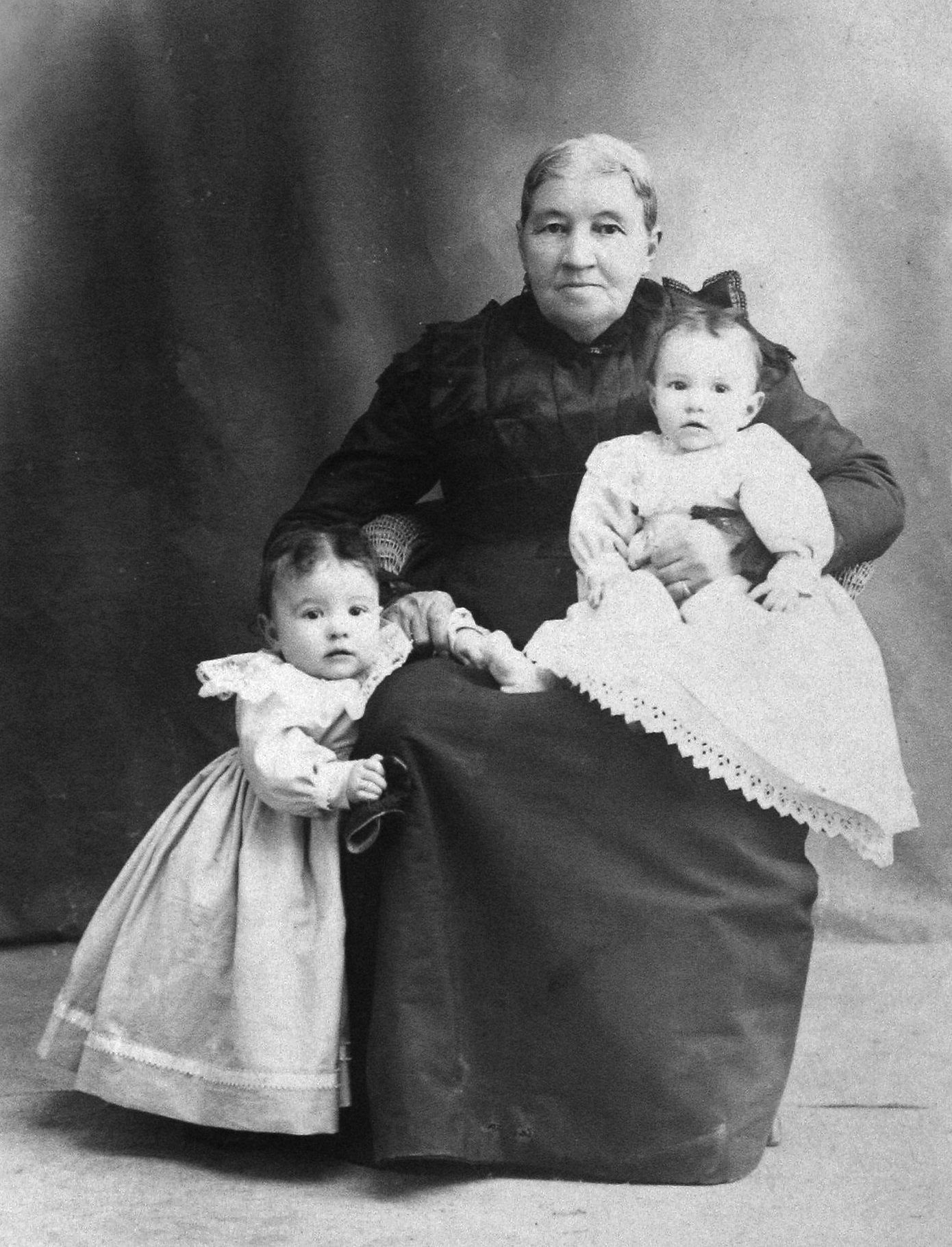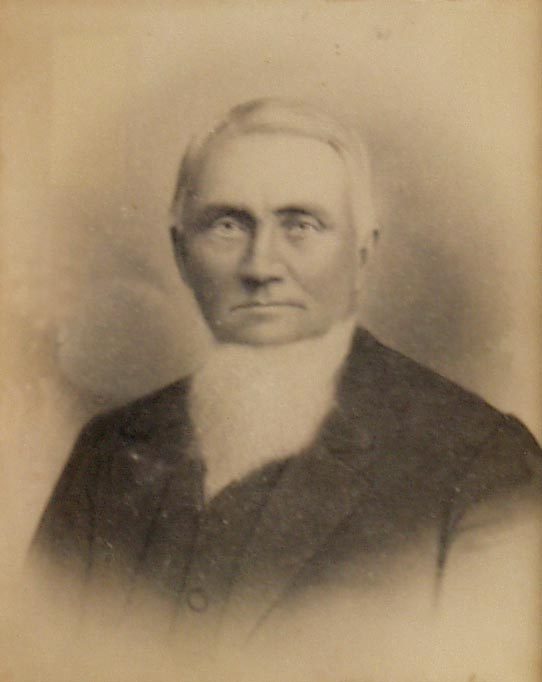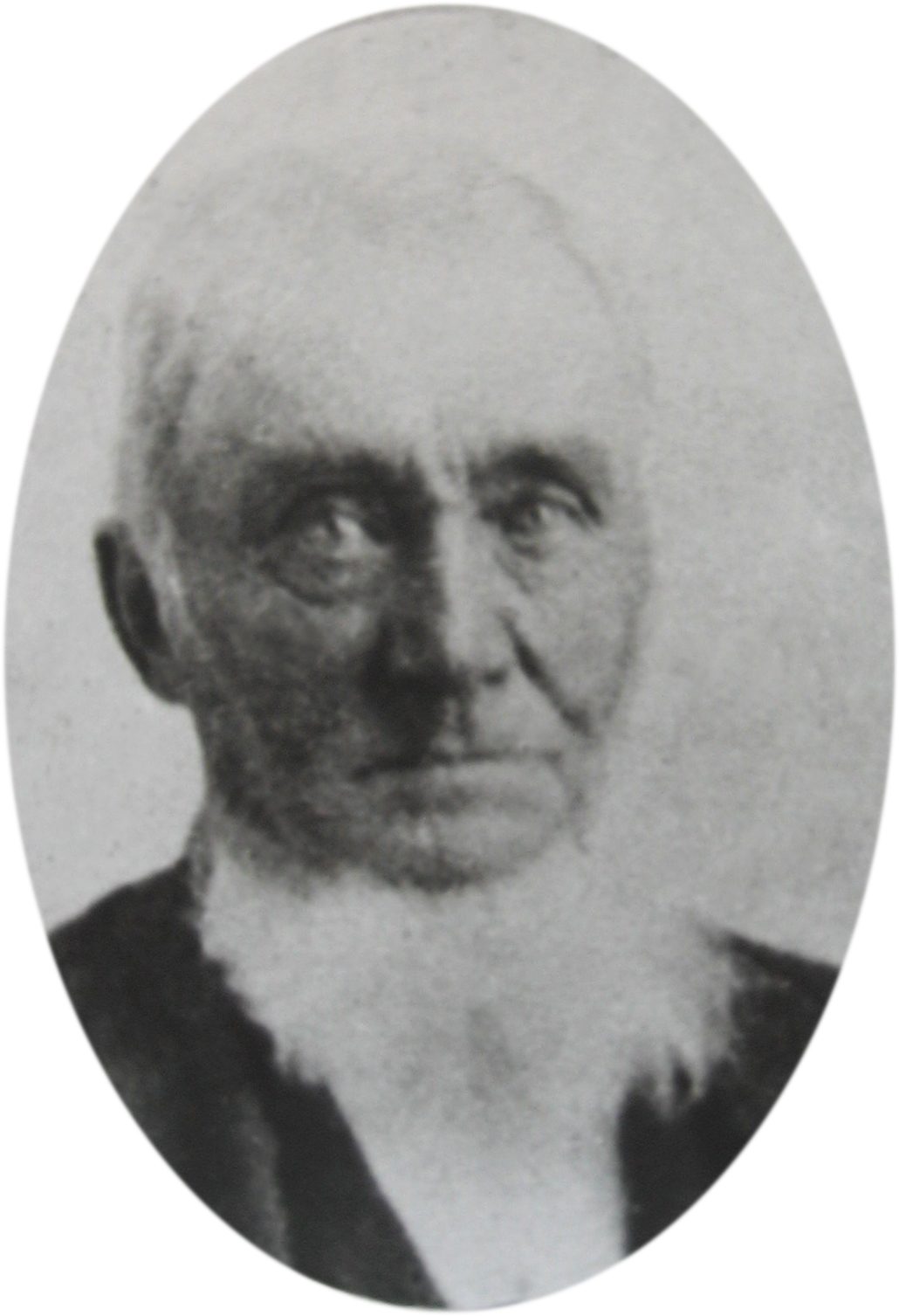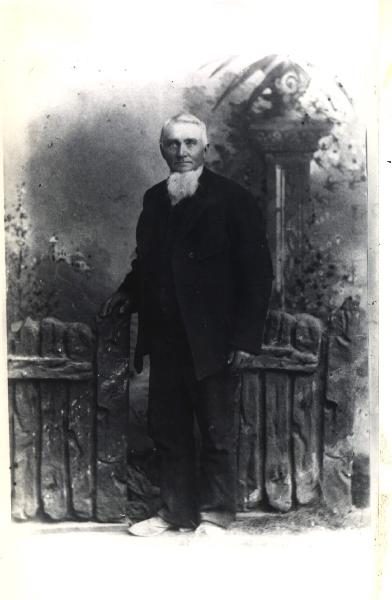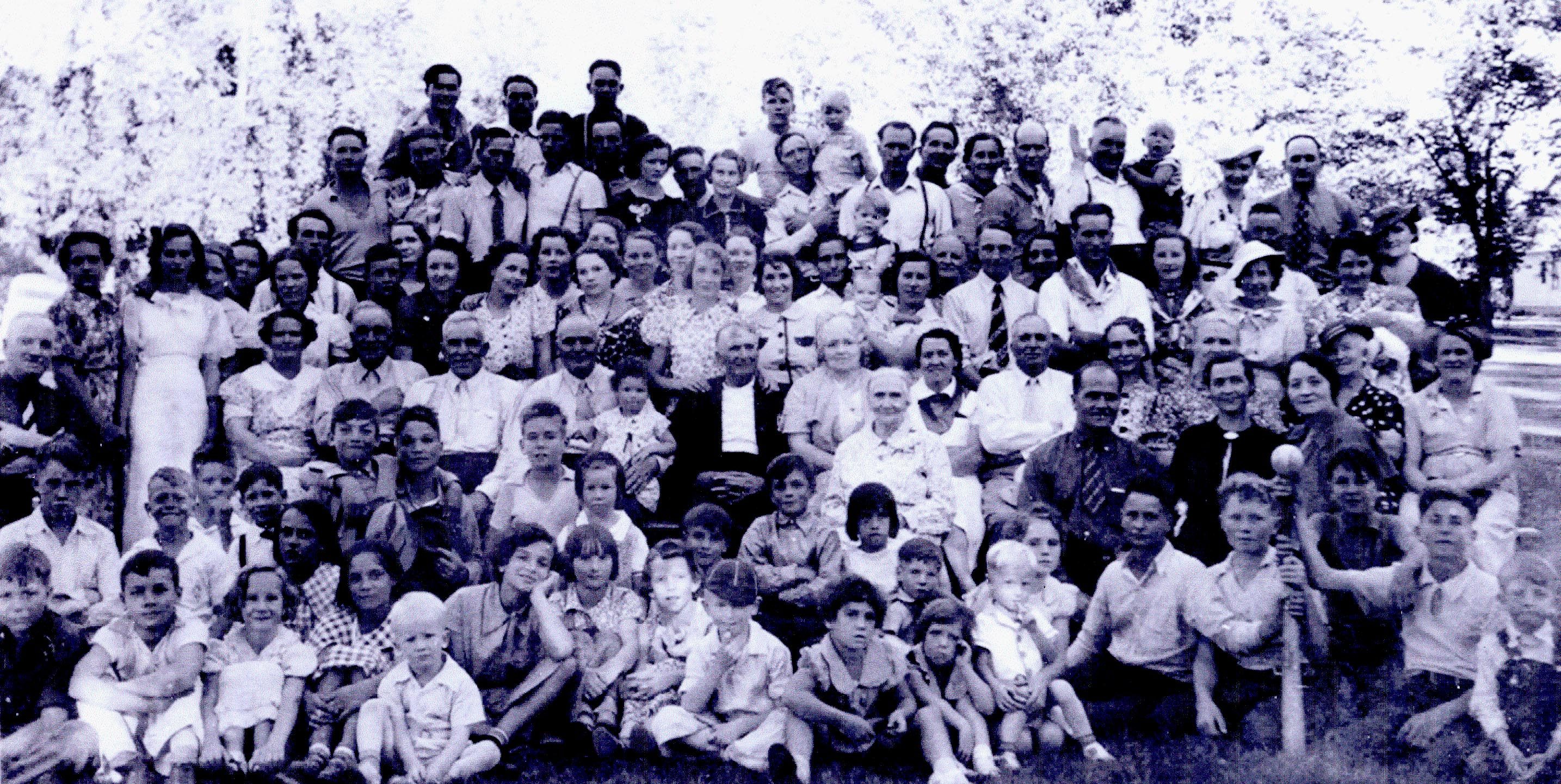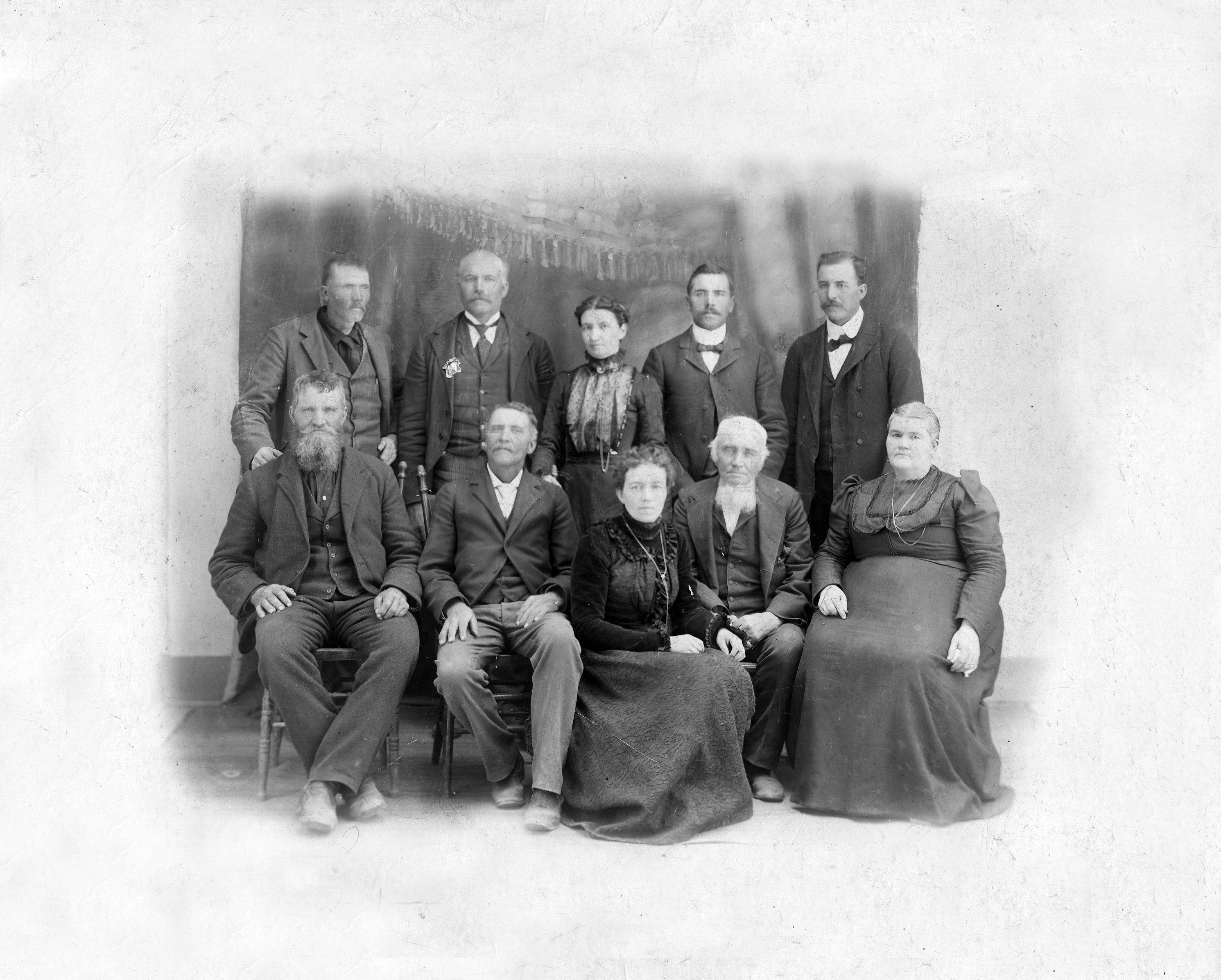Picture: Cyrus and his children around 1901 (Standing from left to right: John Albert, Joshua Alvin, Alvaretta Jane, Aaron Alexander, and Judson Isaac; Sitting from left to right: William Augustus, Cyrus Ammon, Minnie Elizabeth, Cyrus, Alice Ann)
“Having done a good work for the living and the dead, your kingdom shall be great and of thy glory here, there shall be no end.” These words are taken from a blessing given to Cyrus Tolman. Cyrus felt the importance of doing temple work. In the words of one of his granddaughters, “Cyrus had a very strong testimony of the church. He was a very righteous man and was great in doing temple work.” Mary Jane Gorringe Tolman, a daughter-in-law of Cyrus, tells in her story of Cyrus, writing to members of his family and asking that all who could, meet him in Logan, 10 May 1887, to do temple work. Those who did go spent two weeks at the temple for this important work.
Cyrus and Alice lived in Tooele until 1881 when he got the pioneering spirit again and decided to move this family to Goose Creek, Idaho, in the Oakley Valley. Alice was fifty years old and Cyrus was eleven years older. It would be difficult to move onto new land that was still covered with sagebrush. Goose Creek was also near to Marion, Cassia, Idaho.
The day they arrived in Oakley Valley the weather was hot and dry, the dust five or six inches deep. There were no trees or green shrubs. The town consists of a post office and a grocery store. The grocery store was owned by George Grant who eventually married Alvaretta.
Their home was a two-room log house. It was a heartache and disappointment for Alice but she did all she could do to make the home pleasant and home-like for the family. Her other sons would all have homes close by. Cyrus made a journey across the valley to an old ranch known as the Land Ranch to obtain cuttings from some old poplar trees and to get rose bushes. The soil was fertile and there was an abundance of water.
It was difficult to educate the children. It was two years after they moved there that a school was finally built. The men went into the canyon, cut and hauled the logs, built the schoolhouse, hewing the logs on the inside. The flooring, windows, and doors were hauled from Kelton, Utah–over 70 miles away. The schoolhouse served as a church, school and dance hall. It was fourteen by twenty eight feet.
The next grave question confronting the pioneers was finding a market for their produce. There was no railroad in the valley. The grain had to be hauled by team and wagon to the mining roads that the people of today would say were not roads at all, but just trails through the sagebrush and over the flats. The road to market required crossing the great Snake River by ferry boat. One time the boat broke loose from the cable, drifted down the river a short distance, then in some miraculous manner, reached the opposite shore and all were saved. Another time when the boys reached the river, on their return journey, the weather was very cold and the hour somewhat later than usual. They signaled and called, but Mr. Star would not bring the ferry boat over for them, so they had to camp at the river’s edge all night. The weather was so cold they were afraid they would freeze to death in bed in their wagons so they would go out and run up and down the road until they were warmed up, then cover up in bed, fall asleep a while only to wake before long, shaking with the cold and would have to get out and run again. Next morning the river was frozen over so they walked across on the ice and helped Mr. Star cut the ice in front of his ferry boat as he brought it over to ferry their teams and wagons across.
Alice and Cyrus would have an occasional trip to Salt Lake to conference or sometimes to work a while in the Temple. They were present at the laying of the capstone of the Salt Lake Temple, April 1893. How thrilled they were on that occasion when the thousands standing near the Temple of God waved their white handkerchiefs and shouted, “Hosanna, Hosanna, to God in the Highest.”
Cyrus would visit Margaret Eliza sometimes every six months or perhaps once a year. She decided to move her family to Star Valley, Wyoming. In September of 1887 they pulled up stakes and moved everything they had. Cyrus came from Goose Creek to help. From the histories and records available Cyrus stayed in Star Valley for a time and then went back to Goose Creek where he lived most of the time until he died.
In the year 1884 all the farmers in the Goose Creek Valley suffered severe losses from ravages of wild rabbits. With the determination to overcome the enemy, all the men and boys who could hand a gun met at a designated place. Then they divided into two companies and went out to kill the rabbits. The company killing the greatest numbers were the lucky ones and the losing side had to give a supper and dance to the victors. This bit of competition encouraged even the businessmen to take part. On the morning of 13 January 1885 more rabbits than ever had been killed. Then they prepared to go back to their homes. But, alas, fun and laughter can soon be turned to sorrow. When George S. Grant went to climb into the wagon to return home he placed his gun in first. The trigger caught on a seat spring and the gun discharged killing George instantly. George was married to Alvaretta. They had one child and she was expecting another. Alice and Cyrus were much consoled in their declining years thinking of their children and grandchildren.
They were so proud when Judson, youngest of the boys, filled a mission to the Southern States. Alex took care of them and the farm while Judson was away. The testimony that God lives, that He rewards those that diligently seek Him, was always with them. It seemed to cheat death of its sting.
When Alice became very ill and felt she would soon die Cyrus said to her, “Goodbye Alice, I will soon be with you.” She died on 23 August 1901 and Cyrus died 18 September 1901 in Marion, Idaho. His funeral was held 21 September 1901 and he was buried in the Marion City Cemetery. Margaret Eliza raised her family most of the time by herself and died 30 May 1902, less than a year after Cyrus.
(This information was taken from the histories of Margaret Eliza Utley, Judson Isaac Tolman, earlier history compiled by Joyce Hanks and Carma Jenkins, published in the December 1986 Tolman Family Magazine, and Tolman Book of Remembrance by DeVon Mecham; History of Tooele County; My Father’s House, a book written and published by Charles Rendell Mabey; and research done by Alvin and Phyllis Tolman. Also Thomas Tolman Family Magazine, December 1997, pp. 17-23.)
Visit FamilySearch to learn more about Cyrus Tolman, Lydia Ann Kasbeer, Alice Bracken, and Margaret Eliza Utley. Also visit the Thomas Tolman Family Organization to find out how you can get more involved in family history.
Related Stories
Alice is the second wife of Cyrus Tolman and mother of 14 of his children. Alice is the daughter of Joshua Bracken and Hannah Bell


